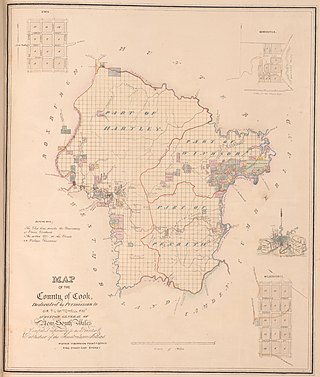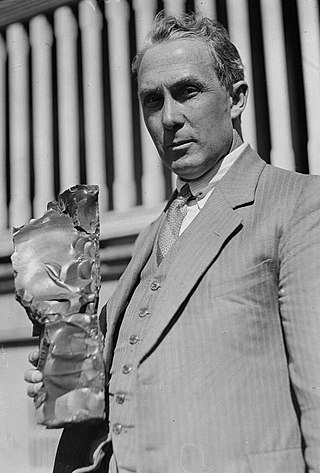Related Research Articles

Cook and Westmoreland was an electoral district of the Legislative Assembly in the Australian state of New South Wales in the first and second Parliaments (1856–1859), named after Cook and Westmoreland counties in the Blue Mountains, Lithgow and Oberon areas. It elected two members simultaneously, with voters casting two votes and the first two candidates being elected. It was largely replaced by Hartley, however both members moved to other electorates, James Martin became the member for East Sydney, while Robert Jamison became the member for Nepean.
Macquarie, until 1910 The Macquarie was an electoral district of the Legislative Assembly in the Australian state of New South Wales, created in 1894 and named after the Macquarie River. It was re-created in 1904, retaining nothing but the name, then abolished in 1920.

Hamilton Knight was an Australian politician and a member of the New South Wales Legislative Assembly from 1927 until 1947. During his parliamentary career he was, at various times, a member of the Labor Party (ALP), the Australian Labor Party (NSW) and the Australian Labor Party (Non-Communist). He was the Minister for Labour and Industry and Social Welfare for 6 years during the premiership of William McKell.
Wollondilly, an electoral district of the Legislative Assembly in the Australian state of New South Wales, has had two incarnations, the first from 1904 to 1981 and the second from 2007 to the present. It returned 3 members between 1920 and 1927.
Ballina, an electoral district of the Legislative Assembly in the Australian state of New South Wales, was established in 1894. In 1904 it was abolished and replaced by Byron. It was re-established in 1988, largely replacing Lismore.
The 1930 New South Wales state election was for 90 electoral districts each returning a single member with compulsory preferential voting. The principal change from the 1927 election was the division of the state into 3 zones, Sydney with forty-three districts, Newcastle with five, and the country with forty-two. While the average number of enrolled voters per electorate was 16,009, in the country zone the average was 13,028,, in Newcastle 18,933, and Sydney 18,580.
Durham, an electoral district of the Legislative Assembly in the Australian state of New South Wales, was created in 1856 and abolished in 1859. It was recreated in 1880 and abolished in 1920.
The 1904 New South Wales state election involved 90 electoral districts returning one member each. The election was conducted on the basis of a simple majority or first-past-the-post voting system. There were two significant changes from the 1901 election, the first was that women were given the right to vote, which saw an increase in the number of enrolled voters from 345,500 in 1901, to 689,490 in 1904. The second was that as a result of the 1903 New South Wales referendum, the number of members of the Legislative Assembly was reduced from 125 to 90. The combined effect of the changes meant that the average number of enrolled voters per electorate went from 2,764, to 7,661, an increase of 277%. Leichhardt was the only district that was not substantially changed, while The Macquarie and The Murray districts retained nothing but the name.
Arncliffe, an electoral district of the Legislative Assembly in the Australian state of New South Wales, was created in 1930 and abolished in 1941.
The 1887 New South Wales colonial election was for 124 members representing 74 electoral districts. The election was conducted on the basis of a simple majority or first-past-the-post voting system. In this election there were 35 multi-member districts returning 87 members and 37 single member districts giving a total of 124 members. In the multi-member districts each elector could vote for as many candidates as there were vacancies. 13 districts were uncontested. This was the first election at which there were recognisable political parties. The average number of enrolled voters per seat was 1,984, ranging from Boorowa (1,103) to Canterbury (3,161).
The 1880 New South Wales colonial election was for 108 members representing 72 electoral districts. The election was conducted on the basis of a simple majority or first-past-the-post voting system. In this election there were 29 multi-member districts returning 68 members and 43 single member districts. In the multi-member districts each elector could vote for as many candidates as there were vacancies. 14 districts were uncontested. There was no recognisable party structure at this election. The average number of enrolled voters per seat was 1,549 for a country seat and 2,361 for an urban one, ranging from East Maitland (966) to Bourke (3,478).
Northumberland, an electoral district of the Legislative Assembly in the Australian state of New South Wales was created in 1859 and abolished in 1913.
Blayney, an electoral district of the Legislative Assembly in the Australian state of New South Wales was created in 1904 and abolished in 1913.
Forbes, an electoral district of the Legislative Assembly in the Australian state of New South Wales was created in 1880 and abolished in 1894.
The Hastings and Manning, an electoral district of the Legislative Assembly in the Australian state of New South Wales was created in 1880 and abolished in 1894.
Hartley, an electoral district of the Legislative Assembly in the Australian state of New South Wales had two incarnations, from 1859 until 1920 and from 1927 until 1968.
King, an electoral district of the Legislative Assembly in the Australian state of New South Wales, had two incarnations, the first from 1904 to 1920 and the second from 1927 to 1973.
Macquarie, until 1910 The Macquarie, an electoral district of the Legislative Assembly in the Australian state of New South Wales, was created in 1894, re-created in 1904, retaining nothing but the name, then abolished in 1920.
Petersham, an electoral district of the Legislative Assembly in the Australian state of New South Wales, has had two incarnations, the first from 1894 to 1920, the second from 1930 to 1941.
Yaralla, an electoral district of the Legislative Assembly in the Australian state of New South Wales was created in 1968 and abolished in 1981.
References
- ↑ Green, Antony. "Elections for the District of Hartley". New South Wales Election Results 1856-2007. Parliament of New South Wales . Retrieved 23 September 2020.
- ↑ "Part 5B alphabetical list of all electorates and Members since 1856" (PDF). NSW Parliamentary Record. Parliament of New South Wales . Retrieved 18 December 2019.
- ↑ "Former Members". Members of Parliament. Parliament of New South Wales . Retrieved 12 December 2019.
- ↑ Green, Antony. "1965 Hartley". New South Wales Election Results 1856-2007. Parliament of New South Wales . Retrieved 4 May 2020.
